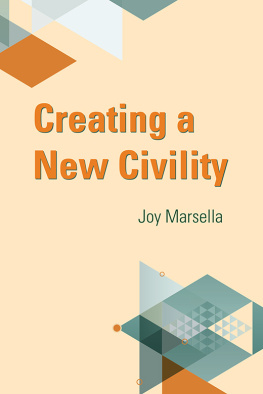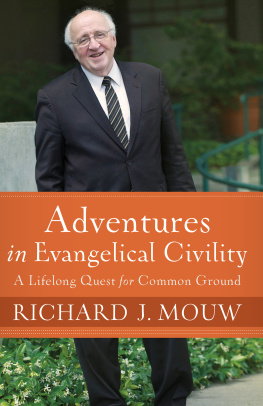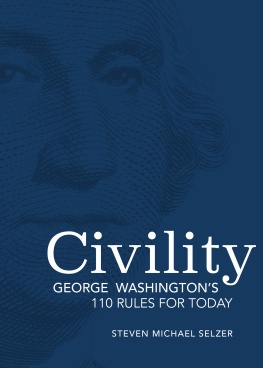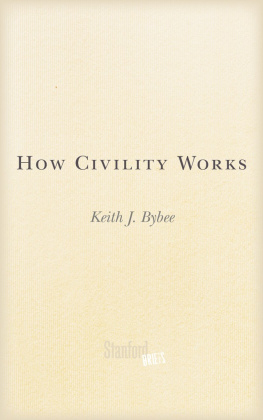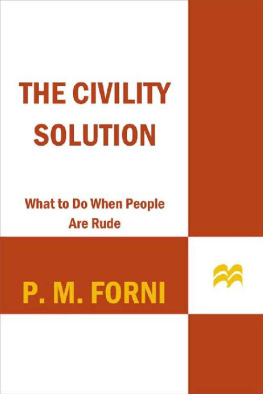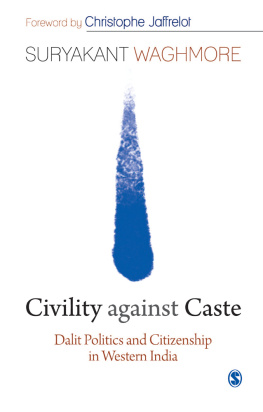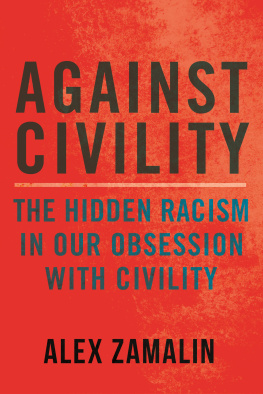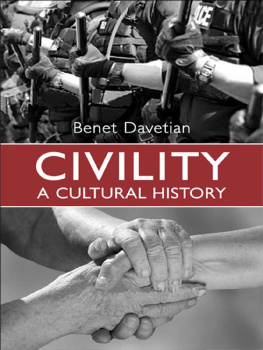Creating a
New Civility
BLISS INSTITUTE SERIES
Bliss Institute Series
John C. Green, Editor
Joy Marsella, Creating a New Civility
William L. Hershey, Quick & Quotable: Columns from Washington, 19851997
Jerry Austin, True Tales from the Campaign Trail: Stories Only Political Consultants Can Tell
William L. Hershey and John C. Green, Mr. Chairman: The Life and Times of Ray C. Bliss
Douglas M. Brattebo, Tom Lansford, Jack Covarrubias, and Robert J. Pauly Jr., editors, Culture, Rhetoric, and Voting: The Presidential Election of 2012
Douglas M. Brattebo, Tom Lansford, and Jack Covarrubias, editors, A Transformation in American National Politics: The Presidential Election of 2012
Daniel J. Coffey, John C. Green, David B. Cohen, and Stephen C. Brooks, Buckeye Battleground: Ohio, Campaigns, and Elections in the Twenty-First Century
Lee Leonard, A Columnists View of Capitol Square: Ohio Politics and Government, 19692005
Abe Zaidan, with John C. Green, Portraits of Power: Ohio and National Politics, 19642004
Creating a
New Civility
Joy Marsella
All Material Copyright 2020 by The University of Akron Press
All rights reserved First Edition 2020 Manufactured in the United States of America.
All inquiries and permission requests should be addressed to the Publisher,
The University of Akron Press, Akron, Ohio 44325-1703.
ISBN: 978-1-629221-23-6 (paper)
ISBN: 978-1-629221-88-5 (ePDF)
ISBN: 978-1-629221-87-8 (ePub)
A catalog record for this title is available from the Library of Congress.
The paper used in this publication meets the minimum requirements of ANSI / NISO Z39.481992 (Permanence of Paper).
Cover design: Amy Freels
Cover illustration: Susan Panning
Creating a New Civility was designed and typeset in Mrs. Eaves and Mr. Eaves, with Univers display by Amy Freels. Creating a New Civility was printed on sixty-pound white and bound by Bookmasters of Ashland, Ohio.
| Produced in conjunction with the
University of Akron Affordable Learning
Initiative. More information is available at
www.uakron.edu/affordablelearning/ |
To Judy Hunter, identical twin and soulmate, who helped me create civility by believing in my project and providing daily encouragement, engaging in hundreds of conversations about the nature of civility, offering thoughtful responses and asking critical questions, crafting my words for cohesion and clarity, and, most important, helping coax an emerging framework into a paradigm.
Contents
Thank you, Laura and Gianna, daughters dear, for cheering me on at every stage of this work and for unbounded confidence that I would envision what full humanity means and how it would help individuals and our society flourish. My sister Margaret, sons-in-law Dave and Eric, and seven grandchildrenTaylor, Connor, Calista, Miranda, Alora, Annabelle, and Harrisonchimed in with their support too.
Thank you, Susan Panning, graphic designer, who encouraged me at all stages of the project, especially at its beginning, and created visualizations that capture the essence of the paradigms five processes.
This book would not have been possible without the help of the librarians of the Fairlawn-Bath Branch of the Akron Public Library System. My thanks especially to the public service assistants who looked in nooks and crannies of SearchOhio to find the books whose authors helped me understand and redefine civility for this day and age.
Thank you to Dr. John C. Green, Distinguished Professor of Political Science, director of the Ray C. Bliss Institute for Applied Politics at The University of Akron, and chief advocate for its Greater Akron Civility Center. Professor Green saw promise in my manuscript and put it in the hands of board members at The University of Akron Press. I am grateful to the staff at the Press: to Jon Miller for his sound advice, to Amy Freels for her lovely book design, to Julie Gammon for her enthusiastic promotion of my book, and especially to Thea Ledendecker, for her extraordinary care and professionalism as she partnered with me to make my text as clear and readable as possible.
Awarenessthe goal of practicing mindfulness; a sense of presence arrived at through consistent meditative practices; noticing what is happening in the moment and accepting of it; a positive, even happy acknowledgement of ones humanity, as expressed in each moment of now.
Bodyheartmindsoula word crunch that captures the totality and complexity of our being, the recognition and accommodation of the simultaneity enabling the creation of civility.
Citizensthose who embody civility and, in doing so, contribute to the communities in which they live, making them vital and strong; those who take civic responsibilities seriouslyfirst and foremost, studying issues and candidates, voting and, furthermore, ensuring that other eligible citizens get to vote.
Civilitya combination of belief and behavior that allows a community and, by extension a countryto thrive, the combination underpinned by a commitment to democracy, and, in the United States, to the support and sustenance of our Constitution and its amendments and of our citizenry. Unfortunately, the word civility is also sometimes used as a tool of oppression, with the assumption of superiority being that others need fixing, or brought into line, or trained; the object of the civilizing is assumed to be lesser.
Common Causethe hard work of citizens finding best ways to make communities fair and just for the people who inhabit themto level the playing field so all can rise and thrive, none at the expense of another; the efforts carried out with sensitivity to the circumstances and history of those involved; the effort of cooperatively coordinating efforts with others also at work in the community.
Common Goodthe coordinated effort of citizens and citizen groups to provide homes, energy, place, space, education, money, lawsor some combination thereofto address a communitys issues, bringing citizens together in the process; the lovely sense of gratification that comes to those who benefit from and carry out community care, defined broadly here.
Common Groundthe agreed-upon points of departure in the search for solutions to problems or for carrying out a project; a shared concern for, even love for, a place or purpose or people that serves as motivation to make improvements, to create beauty or to offer a moral demonstration of caring.
Compassiona sympathetic interest in and for a communitys citizens; a quality manifested in active interest in and interaction with others; implies a willingness and intention to connect with and care for those whose lives touch ours, immediately or remotely; manifested as the opposite of hate, suggesting that, in creating civility, all of Earth citizens are understood as fully human.
Consubstantiationa quality described by Kenneth Burke as being with another to the extent that there is an overlapping or coming together of our substances, of mind and matter, used here as an ultimate kind of caringand that which is necessary in the search for reason and the quest for civility.

